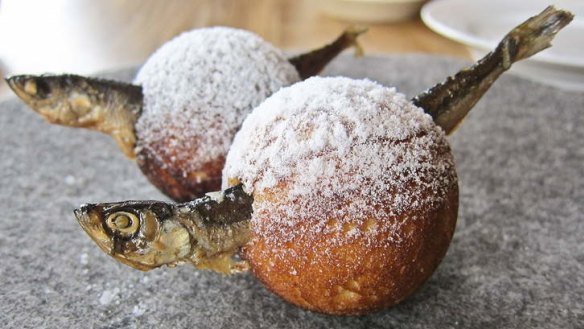'Noma diet': Foraged foods could promote weight loss

It is hailed as the finest restaurant in the world for its unique twist on Scandinavian fare - with wild berries, fish and dandelions served alongside "malt soil" and herbs.
But now heart experts say a diet based on recipes from the Danish restaurant Noma could shed pounds and protect against heart attacks and strokes.
For decades, cardiologists had promoted the benefits of a Mediterranean diet, with high levels of olive oil, fish and sun-ripened vegetables, to protect the heart.
But new research, presented at the European Society of Cardiologists Congress in Barcelona, shows that men and women who followed recipes from chefs at Noma lost three times as much weight as those on a standard diet.
The Michelin-starred eatery in Copenhagen has become world-renowned for its unusual fare, and was named the best restaurant in the world in four of the last five years.
Run by chef Rene Redzepi, it has made its name for serving seasonal and foraged foods including asparagus, blueberries, fish roe and lingonberries, including its signature meal, vegetable dish with malt soil, in which tiny root vegetables are planted in what looks like earth, but is actually made of flour and nuts.
Despite the high prices of the restaurant - where a tasting menu with wine costs almost £300 (AUD$529) - researchers said the daily costs of the regime were approximately £4.75 a day, around 25 per cent more than the costs of the standard diet.
The study of 181 obese men and women found those on the diet lost an average of more than 10 pounds (4.5 kilograms) in six months. Those who were put on a standard Danish diet lost just three pounds in the same period. Those placed on the Noma diet also saw greater reductions in their blood pressure, reducing the chance of heart attacks and strokes, the study found.
Meinert Larsen, associate professor from the University of Copenhagen, said the use of fresh foods and an emphasis on seasonal produce meant participants on the diet got extra nutrients.
Professor Larsen said: "There's particular emphasis on foraged foods because they taste better, and usually contain greater amounts of vitamins and minerals than conventionally grown plants."
Previous research on the Noma diet - also known as the Nordic diet - found that it led to reductions in cholesterol. It also reduced chemical levels in the blood that cause inflammation, which has been linked to heart disease and type two diabetes.
Experts said many countries could learn from Scandanavian eating habits. Latest figures show obesity levels in Denmark are half those in Britain. In Denmark, 13.4 per cent of adults are obese, compared with 26.1 per cent in the UK.
In previous research, obese patients from Finland, Sweden, Denmark and Iceland were asked to either eat their regular diet or to switch to a Nordic diet.
Both groups were asked to consume the same number of calories but those on the Nordic diet ate berries, three fish meals per week, local vegetables and whole grain products. If they ate meat they ate poultry or game. Those on the control diet ate low fibre cereal products such as white bread and fatty foods like butter.
After 24 weeks those in the control group showed little change in the level of so-called "bad" cholesterol, while those on the Nordic diet showed a 4 per cent drop and an increase in the "good" cholesterol, HDL-C.
Go wild: How foraged foods could shed weight
Since opening 11 years ago, Noma has become increasingly renowned for its unusual fare, with a focus on seasonal and foraged foods.
Researchers from Copenhagen University worked with the restaurant's chefs to devise 180 recipes and seasonal menu plans for dieters. The diet comprises 15 food groups: fruit and vegetables (especially berries, cabbages, root vegetables and legumes), potatoes, fresh herbs, plants and mushrooms gathered from the wild, nuts, whole grains, meats from livestock and game, fish, shellfish and seaweed.
Recipes included baked cod with celery, sweet water pike grilled with summer cabbage and turbot in bread crumbs. Little red meat was eaten, with poultry or game chosen instead, meaning less fat.
The Telegraph
Restaurant reviews, news and the hottest openings served to your inbox.
Sign up- More:
- Restaurant news